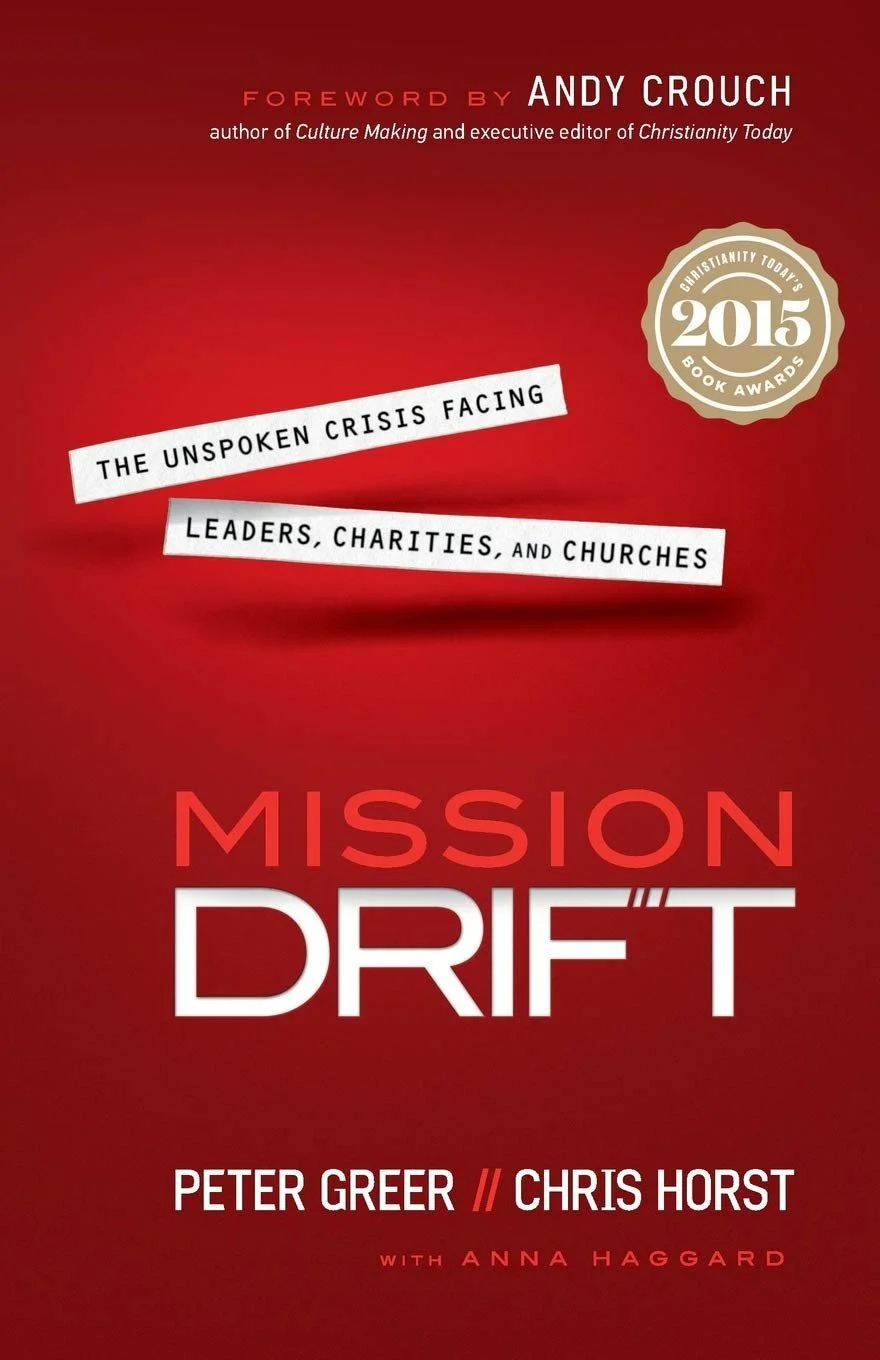Mission Drift
In our neighborhood there’s a big building, and on that big building is emblazoned a single letter: Y.
I thought about that building and that big solitary letter quite a bit as I read Mission Drift: The Unspoken Crisis Facing Leaders, Charities, and Churches, the new book from Peter Greer and Chris Horst of HOPE International, two leaders I’m grateful to also consider friends. Greer is the co-author of The Poor Will Be Glad, an introduction to microfinance, as well as The Spiritual Danger of Doing Good, which I reviewed last fall.
The book addresses a troubling trajectory that faith-based organizations all too often take, slowly but surely drifting away from the mission, vision, and values of their founders. It doesn’t happen overnight, and it’s rarely the result of a concerted attempt by militant secularists to eradicate any and all religious influences, but its effects are real and sobering nonetheless. “The pressures of Mission Drift are guaranteed,” they write, citing financial, social, and other pressures. “It is the default, the auto-fill. It will happen unless we are focused and actively preventing it.”
The Y—formerly the Young Men’s Christian Association, or YMCA for short—serves a poignant case in point. For all the good that local Ys continue to offer families and communities, it may come as a surprise to some of us that before being known for treadmills and Zumba classes, as local Ys now are, the YMCA offered Bible studies as part of its stated objective to facilitate “Christian discipleship developed through a program of religious, educational, social and physical activities.”
Greer and Horst write with humility and grace, well aware that mission drift can happen to any organization, and that even their own is not exempt. They don’t evaluate current faith-based organizations on their varying degrees of mission drift (or at least not by name), which is to say they are careful not to name and shame other organizations. I really appreciate that. But helpfully, they do name what they consider to be the causes of mission drift, and they examine by way of case study a number of organizations—Harvard, Yale, and ChildFund to name just three—which have drifted over time and whose leaders have publicly acknowledged (without apology, it seems) the departure from their respective institutions’ faith-based roots.
To an intended audience of Christian leaders, donors, and board members, Greer and Horst write, “We want to help you clarify the missions of the organizations you most love. And we want to equip you with the safeguards to reinforce and protect them.”
Leaders of faith-based organizations will find this book to be a helpful tool as they seek to protect and advance the mission they are entrusted to serve. Those who serve on boards of directors will find in these pages good questions to ask about the overall direction their organizations may be heading, and to safeguard against drift. And those of us who lend our voices and resources to organizations on the basis of their compellingly articulated way of serving the common good will find a reliable set of criteria for evaluating which organizations are truly worthy of our continued support.
As Greer and Horst remind us, the temptation to mission drift is inevitable, but giving into the pressure is not. For a variety of stakeholders who together want to see good organizations stay the course, Mission Drift is an invaluable resource and I commend it highly.
